This Arizona city is built on prison labor. That keeps taxes low. But what’s the real cost?
Ryan Fisher is back to doing what he did before prison, working 9 to 5 at a desk job.
As a sales consultant, it’s the kind of work he’s used to: coming into an office and wearing a button-down shirt, pounding phones and sending emails. It’s nothing crazy, but it pays the bills and supports his family.
Fisher didn’t learn about his job through prison. He didn’t get a job learning how to sell while behind bars. He wasn’t placed into a position that would build out his tech resume.
Instead, he dug ditches.
When Fisher was sentenced to a minimum security prison in 2020 for theft, he looked forward to rehabilitation in the form of classes, drug therapy, or even expanded education — all things that recidivism experts say prove helpful in successfully returning to society.
Instead, he was one of hundreds of prisoners each year who were forced to work manual labor in cities and towns across the state.
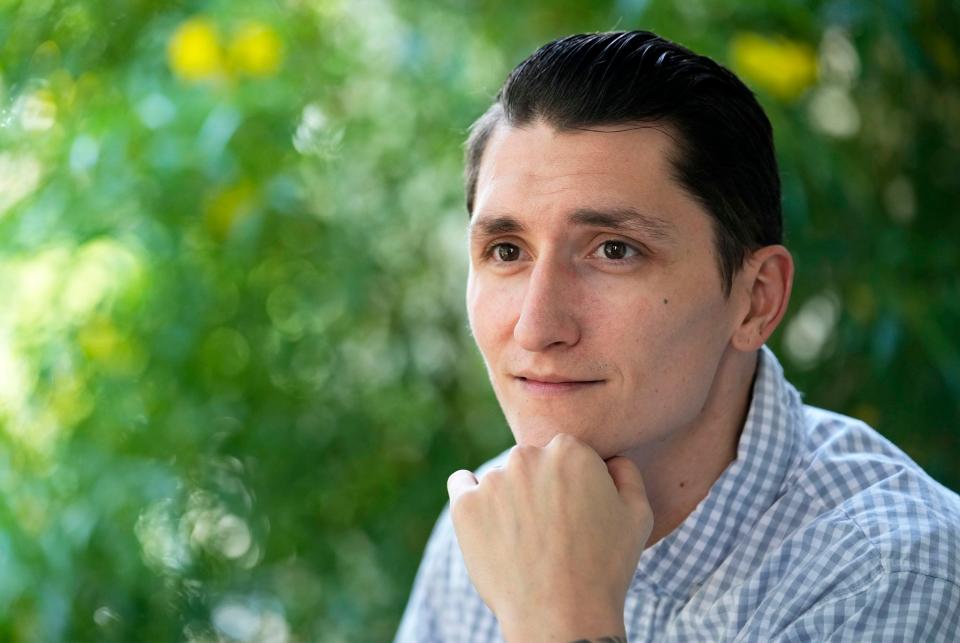
The low pay — just 50 cents an hour — was just one problem he and other workers protested. Multiple people interviewed described dehumanizing treatment and degrading work conditions. They gave examples of corrections officers punishing people for taking breaks or sitting down. And after sweating out thousands of calories in 100-degree heat, they said their food was minimal, just enough to not faint.
The work, the Department of Corrections says, is meant to build skills that will help prisoners get jobs after they’re released and is a form of rehabilitation in itself. The department could not provide any proof such jobs actually help in reducing someone’s chance of incarceration again.
And Fisher doesn’t buy the department’s reasoning. He said the jobs he got put on — mowing lawns, highway cleanup, and fixing roads — didn’t build skills for him at all. It was just cheap labor for the benefit of others. “It's basically the closest thing to slavery.”
These jobs are different from the work available through Arizona Correctional Industries, which pays typically higher wages for working for a private company to do other non-skilled or semi-skilled work. The work done in cities is offered through an Intergovernmental Work Agreement, where prisons can lease out their inmates to other government entities or nonprofits for typically less than $1 per hour of work.
Indeed, the jobs offered don’t provide marketable skills. They’re the kinds of jobs that many city officials have a hard time filling because they’re low-paying and require manual labor, such as janitorial, landscaping or construction work. And while some towns had to deal with shrinking budgets that meant they couldn’t fill the often back-breaking jobs with full pay and benefits, the Department of Corrections gave them a lifeline by allowing them to hire as many prisoners as they needed to fill those gaps.
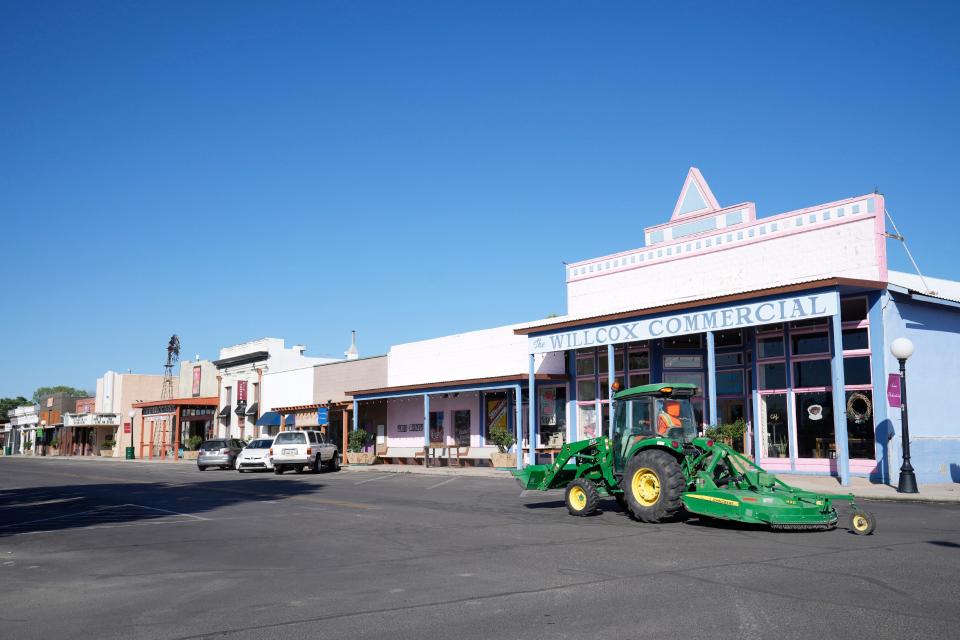
In a review of thousands of pages of contracts between 2017 and 2021, The Arizona Republic and KJZZ identified nearly 100 public entities across Arizona that employed hundreds of rotating prisoners every day in a wide variety of maintenance, agricultural and construction jobs, and other temporary work.
In Safford, the University of Arizona paid prisoners 50 cents an hour to pick and harvest cotton crops for agricultural research. At least 21 school districts across the state paid prisoners less than $1 an hour to do janitorial work inside their classrooms and gyms. Another 36 cities, including Bisbee, Globe and Tombstone, contracted with the Department of Corrections to maintain city-owned property. Multiple state, county and city agencies also had prisoners do lawn maintenance or building upkeep at the governmental mall in Phoenix.
City officials and residents of towns that used prison labor didn’t see this work as exploitation. Instead, it’s part of a long history of using prisoners to save money for residents. They say that prisoners are happy to get out of their cells and enjoy the fresh air and that the work, in itself, is a reward. Many of Willcox’s locals proudly said the prisoners are part of their community.
But few free people have ever heard the perspective of prisoners working these jobs. That’s because the Department of Corrections forbids prisoners from speaking to residents, and some schools go so far as to restrict prisoners from view to keep their work hidden from public scrutiny.
The Republic and KJZZ spoke to almost two dozen prison workers in cities, who all told similar stories of having to work outside in brutal heat for long hours with not enough food. They also face repercussions inside the prisons if they push back against their treatment.
‘I feel like I’m already guilty’
Driving into Willcox on Railroad Avenue — one of the city’s main thoroughfares — it starts off as a dusty dirt road, its shoulders overgrown with muhly grass, twin agave and dried-up yucca skeletons; all of them are shriveled and browned by dehydration. After hitting paved road and winding through the city’s large and empty streets, the niceties of living in this rural part of Arizona are on constant display: a local barbecue joint attached to an ancient railcar starts up its smoker; neighbors wave at each other and stop to chat; an elderly craftsman parks himself outside the Rex Allen Arizona Cowboy Museum with his tools.
And speckled throughout the city: people working in orange jumpsuits.
Willcox, a city of 3,213 people, according to the 2020 census, is almost entirely maintained by prisoners. Without their labor to keep the library, golf course, rodeo stadium, schools, country club, and cemeteries clean and operational, locals say the city would fall into disrepair.
On July 14, David Shinn, director of the Arizona Department of Corrections, Rehabilitation & Reentry, even said that cities rely so much on prison labor that getting rid of it would cause “some of those jurisdictions (to) collapse.”
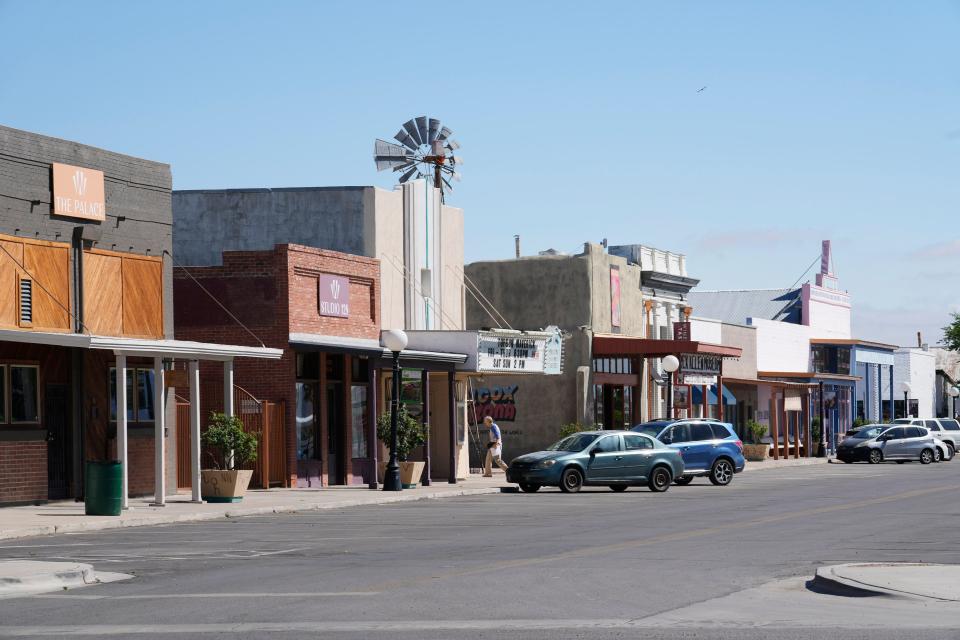
Willcox isn’t unusual from other rural areas across the Southwest, where many of the desert’s towns were built or expanded using prisoners. Willcox’s administrative building — which used to be the old railroad depot — was constructed by prisoners and refurbished by them decades later.
Long stretches of highway around Willcox were paved by incarcerated people, most notably the mountain pass between Bisbee and Tombstone, the Douglas Highway near the Arizona border, and the Fairbanks bridge west of Tucson. All of these projects were hailed as fiscally responsible, since using prisoners was cheaper than hiring construction crews.
That history has flowed through seamlessly to the 21st century as an easy sell for local prison wardens, who continue to promote using prisoners in local communities to save money.
In 2010, a representative from the state prison in Douglas — located directly on the border of Arizona and Mexico — sold the local city council on keeping its prison labor. That same year, former Corrections Director Charles Ryan ordered local prison wardens to convince their surrounding cities and towns to use prisoners for work.
The end result is a city like Willcox — a “prison city,” as Ryan called it — where prisoners often outnumbered city workers on any given day, according to Caleb Blaschke, the city’s manager.
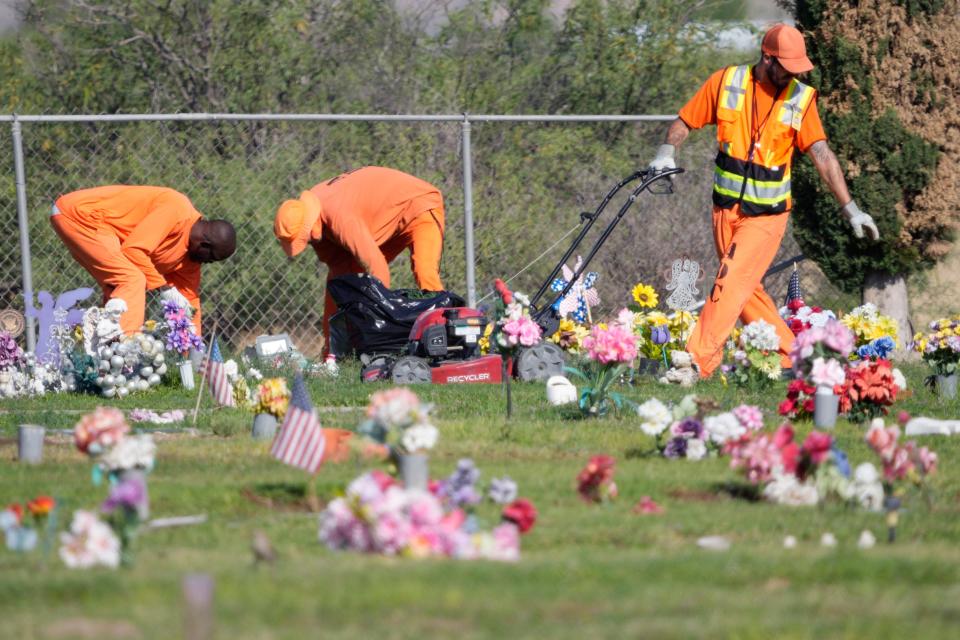
Ryan Eddards, who is currently incarcerated, worked on Willcox’s roads, using hot and cold asphalt to fill potholes. Eddards saw plenty of different jobs while inside — from cleaning the administrative building of the prison to working in warehouses at Hickman’s Family Farms processing eggs.
But Eddards also spent many months with the roving maintenance crew, which was dispatched to different cities, including Willcox.
Prisoners currently placed in these jobs are all low-level offenders, serving time for nonviolent felonies. Oftentimes, they’re supervised by a corrections officer. But there are times when one is hard-pressed to find someone with a badge looking over a jumpsuit.
This kind of freedom sounds like a welcome respite for many prisoners. They’re told the job allows them to get outside of the prison walls and make a little bit more money than what they would make inside the prison. A prisoner making 35 cents mopping the floors inside could do the same thing in Willcox and get paid 50 cents.
It's a small increase, by free people’s standards. But that little bit of money makes a dramatic difference for incarcerated people.
It’s common mythology that prisons provide everything for their populations. Instead, prisoners have to buy almost everything at prices similar to those found on the outside. But when the average wage is 10 to 35 cents an hour, a $2 tube of toothpaste for sensitive teeth as opposed to the prison-issued version becomes a luxury only few can afford. That 15-cent raise is significant.
But these higher-paying jobs aren’t always what they’re billed to be, and they’re also hard to keep. Refusing to work — even when sick — or getting any kind of disciplinary ticket, such as owning too many clothes, getting a tattoo, or raising your voice with staff, can result in losing a job. And when things go wrong, it’s a free person’s word against an “inmate,” as Eddards knows.
Within a month of working in Willcox, Eddards was accused of stealing from the library and using the internet. The city manager also said someone in the library pocketed Fitbit watches.
But Eddards denied the accusations, and said he didn’t get to prove his innocence, or even argue his side. He said he was just fired.
Eddards, who has to go through at least one pat-down before returning to prison, a sniff-search done by dogs, and a nude cavity search once inside the prison, said there is no way he could steal, even if he wanted to. “I'm not worried because I've done nothing wrong,” Eddards said. “But I feel like I'm already guilty because I'm in prison.”
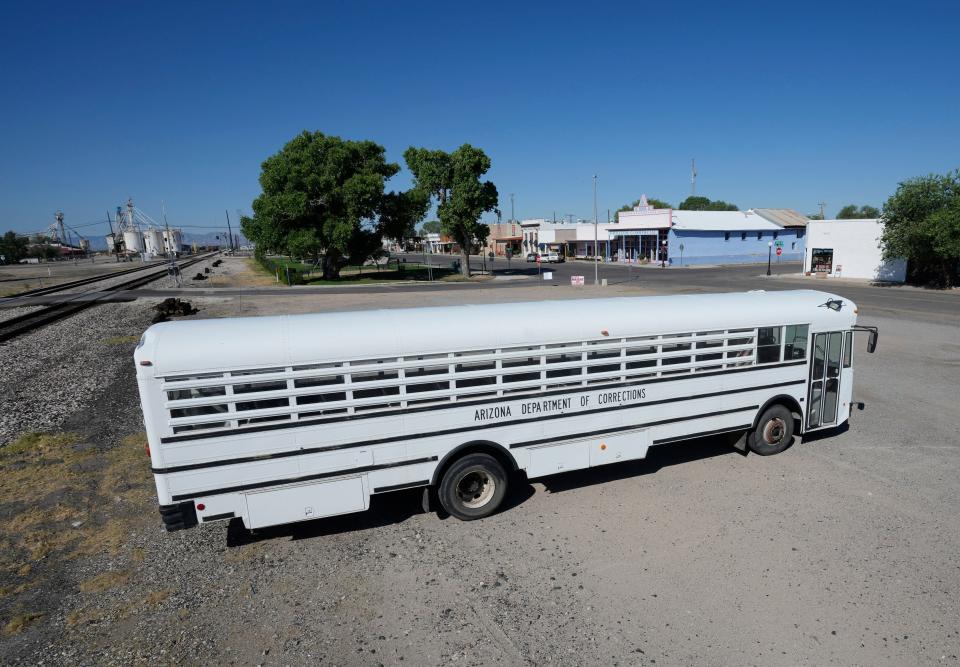
Many of these kinds of rules and rushes to guilt resonate as Jim Crow-era laws, but they have been tailored specifically to prisoners. For example, at the training academy for state corrections officers, prisoners must sign worker agreements saying that they cannot “utilize any restroom not assigned for inmate use,” or “have contact with any non-(Arizona Department of Corrections) personnel.” In some schools where prisoners are used, contracts specify that prisoners cannot be seen by anyone or enter a room with students or staff inside. Prisoners are not allowed to refer to anyone on staff by their first names. In turn, they are only referred to by corrections officials as “inmate.”
But Blaschke said the city’s workers are separate from the Department of Corrections staff, and the city is not nefariously using prisoners for penny-pinching. He insisted that the city requires cheap labor, and without prisoners, Willcox simply couldn’t exist in its current form.
More for less
A smattering of unincorporated areas such as Cochise and Bowie flank Willcox, and their combined population of a few thousand residents use the city as their stomping ground. As a result, Willcox is one of the cultural and business hubs for the northwestern portion of Cochise County. The city maintains five ballfields, a year-round rodeo arena, an Olympic-sized public pool, two cemeteries, two multiuse fields and a golf course.
A small study done last year by Willcox officials showed that compared with cities of similar populations, Willcox has more quality-of-life amenities.
Williams, near Flagstaff, has only one ballfield. Willcox, in comparison, has only 200 people more than Williams but maintains four more ballfields. Pinetop-Lakeside, near Show Low, has a population similar to Willcox and maintains almost half of the public-use buildings that Willcox does.
All of that is being done with a budget of under $4.4 million a year, according to the city’s budget, compared with Williams or Pinetop-Lakeside, both of which operate with millions of dollars more.
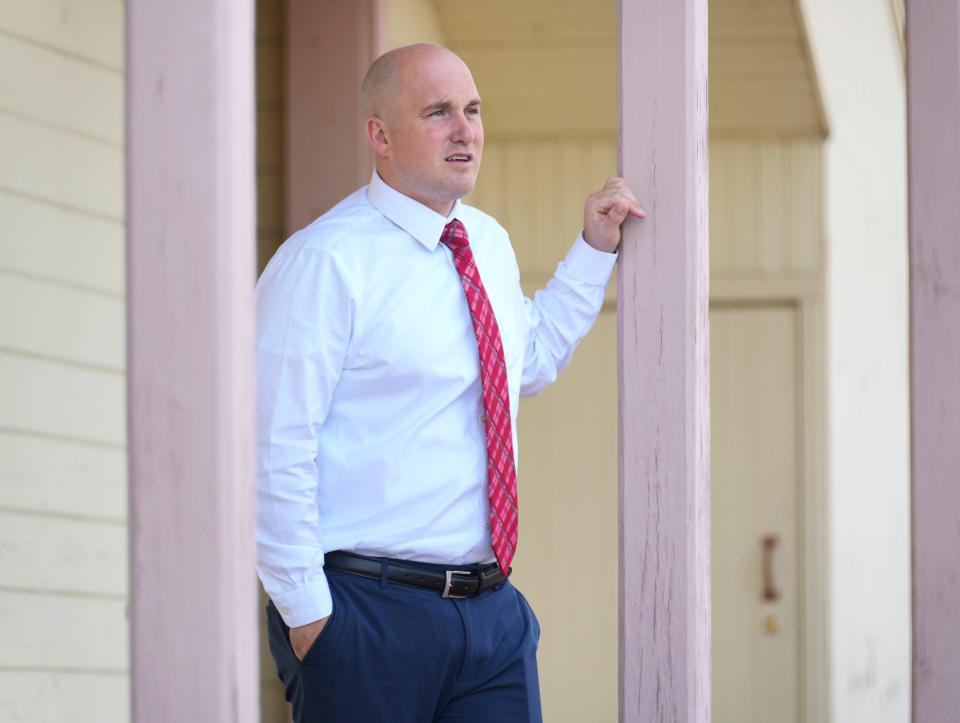
Blaschke said Willcox’s population alone can’t pay for the maintenance — let alone capital improvements — of what people spend in sales and property taxes. And they are already maintaining property at a loss: The pool and golf course bleed the city’s budget of $200,000 annually, according to the study.
If Willcox had to pay prisoners the standard janitor’s wage — approximately $55,000 a year with benefits — Blaschke estimated it would cost the city about $1.2 million a year, a third of the city’s current budget.
By using prisoners, it only costs Willcox an average of $20,000 a year, he said.
Living beyond their means
On Twin Lakes Golf Course, located a few miles from Willcox’s downtown center, the season’s first flock of migrating cranes started to make their roost when William Teeters pulled up in his car.
In front of him, two men sat down on an electric golf cart dressed in orange jumpsuits. In the distance, another two men in orange used a pothole machine to dig up the grass and dirt so they could fix a water leak on the green.
Teeters, who goes by “Chilly,” a reference to his younger days when he always wore a sweater because he was so cold, has overseen the golf course’s maintenance and operations for years. As a Willcox native, he’s witnessed firsthand the benefit the city and its residents get by using prisoners to maintain its roads, government buildings, cemeteries and parks, along with the rodeo, library, public schools, wastewater plant, and country club.
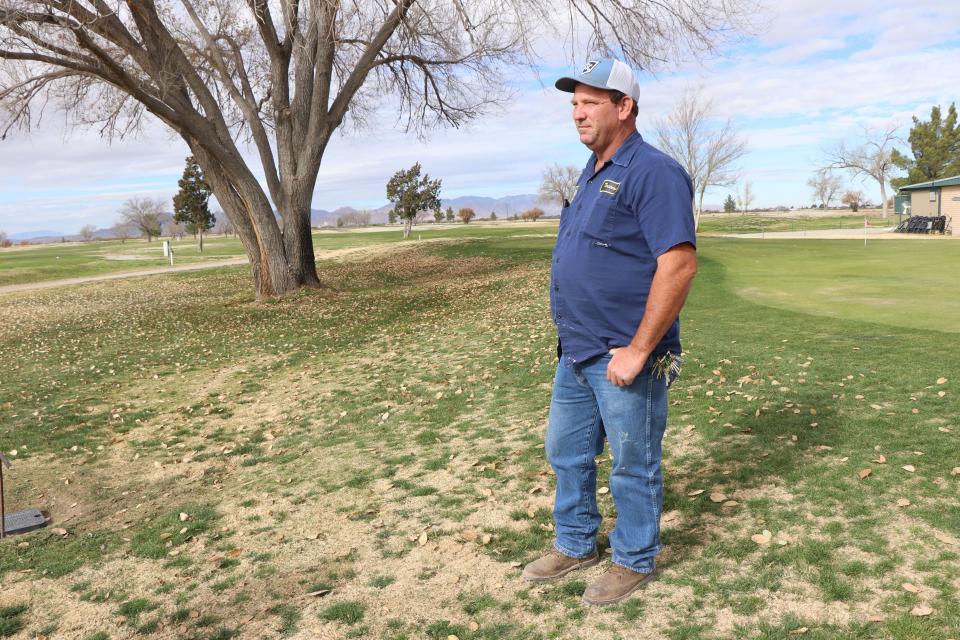
At the golf course, six to seven men on any given day work the greens and fix carts, mow the lawn, repair buildings and fix pipes.
“We have one of the nicest golf courses in Cochise County, is what I hear people say,” Teeters said. “It takes a lot to keep a golf course maintained and running right.”
And that, he said, simply can’t be accomplished without prison labor.
But the golf course has had its own history of money issues related to the city. Even though it’s one of Willcox’s main attractions, with people from outside the country traveling to play the course, maintaining the greens has been a financial hassle.
In 2012, the land was privately owned by Jason Jones, who said in a July City Council meeting that year that he was simply trying to keep up by “putting bandages and filling in holes,” at the course.
“I am proposing the city take care of this,” he said at the meeting.
Afterward, the city took over the property and hired a team of two prisoners to maintain the course. But it still wasn’t enough to maintain the grounds.
“It takes more than two people,” Teeters said. “It takes about five people, that’s the reality of it.”
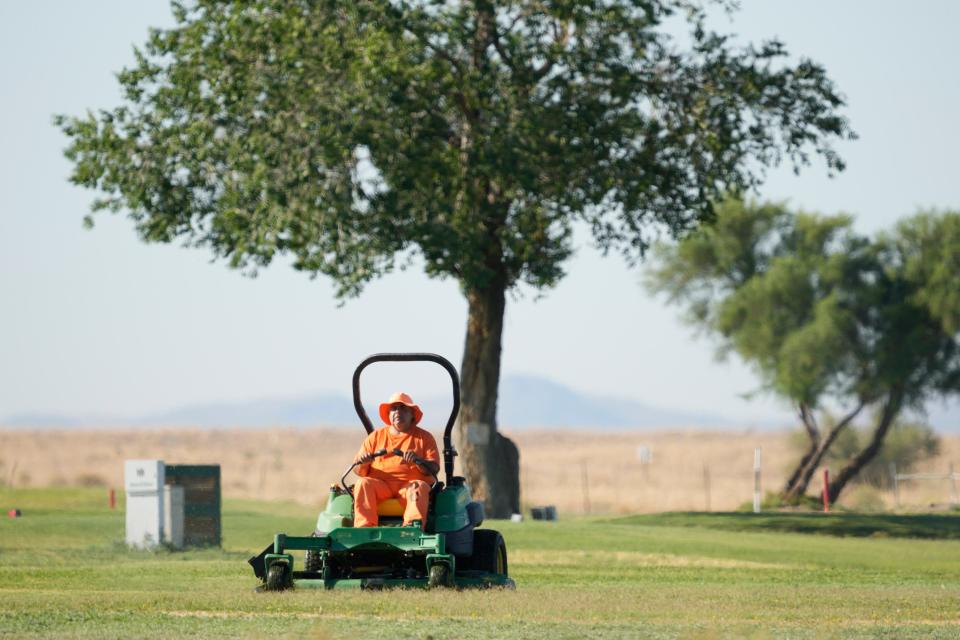
Even though Willcox isn’t making money off the prisoners, it’s saving residents from an increase in municipal taxes, which was highlighted in Teeters’ mind at the beginning of the pandemic in 2020, when prisoners were confined to their correctional facilities for almost a year.
“It wasn’t until June or July where you started to see the difference, with the impact they bring here in the city of Willcox,” he said. “The DOC guys really help a lot, keep up the maintenance of the towns you’re working in.”
Roads had sprouted 3-foot-high grass thickets. The highways around Willcox became filled with tire debris. And the cemetery turned into an overgrown playground for gophers.
“We had to start picking and choosing what we were going to maintain,” he said.
When asked if the city could operate without prison labor, Blaschke, the city manager, said that it could, but there would be excessive overtime to pay. And they would have to go without a few of the ballfields, the swimming pool or the golf course — all amenities that make Willcox attractive for residents in the surrounding areas.
Discontinuing prison work would also mean raising taxes on the residents of Willcox, many of whom are living below or at poverty levels. The average income sits below $40,000 a year. An increase in taxes, Blaschke said, is not a solution he’s willing to entertain.
But while it may seem economically advantageous, economists with a wide range of political backgrounds say that the city’s use of prison labor is creating its own downward economic spiral.
“The crux of this problem is that every business's employees are someone else's customer,” said David Cooper, a director of research at the left-leaning Economic Policy Institute in Washington, D.C. “With prison labor, you're sort of taking this conundrum to the extreme, because even though you're paying prison laborers something — even though it's not very much — it's not like those folks can go out and spend those dollars in the local economy.”
Ryan Bourne, an economist and chair of the Public Understanding of Economics at the libertarian Cato Institute, said that the city’s use of prisoners is creating a local monopoly on labor.
“We really should be wary about the incentives these jobs create to maintaining a large prison population for the benefit of the state and certain businesses,” he said.
“If these people are nonviolent criminals deemed safe enough to work unsupervised in their community, should they be in prison anyway?”
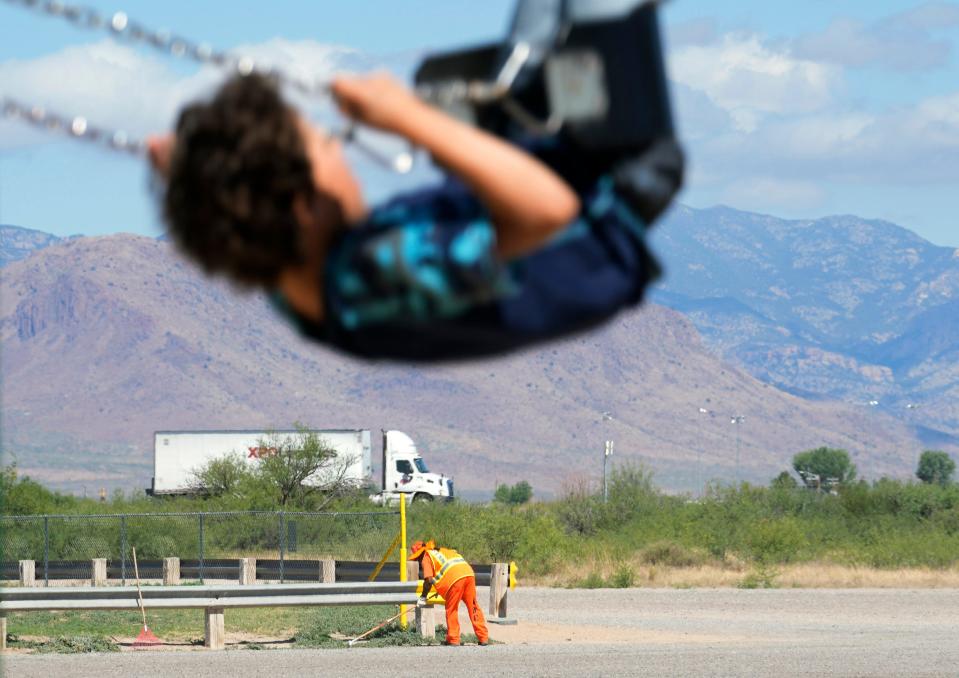
Their voices heard
Keeping Willcox’s taxes down isn’t what workers at the prison care about.
The Republic interviewed 20 current prisoners who all worked in Willcox or other cities. Department rules forbid that they talk to anyone on the job, and most of them were promised anonymity since they face retaliation if they speak out. Many risk losing their jobs and being ticketed if they are found to have spoken out; others could get their privileges (phone calls or visits with family) taken away.
Residents, for the most part, enjoy the prisoners in their city and like being able to give an opportunity to incarcerated people who “just want to go home,” as Teeters said.
At the Big Tex Bar-B-Que across from Willcox’s City Hall, Felicia Harguess, a veteran waitress who sees the prisoners every morning, said she liked that her city was using the prisoners to keep the streets clean.
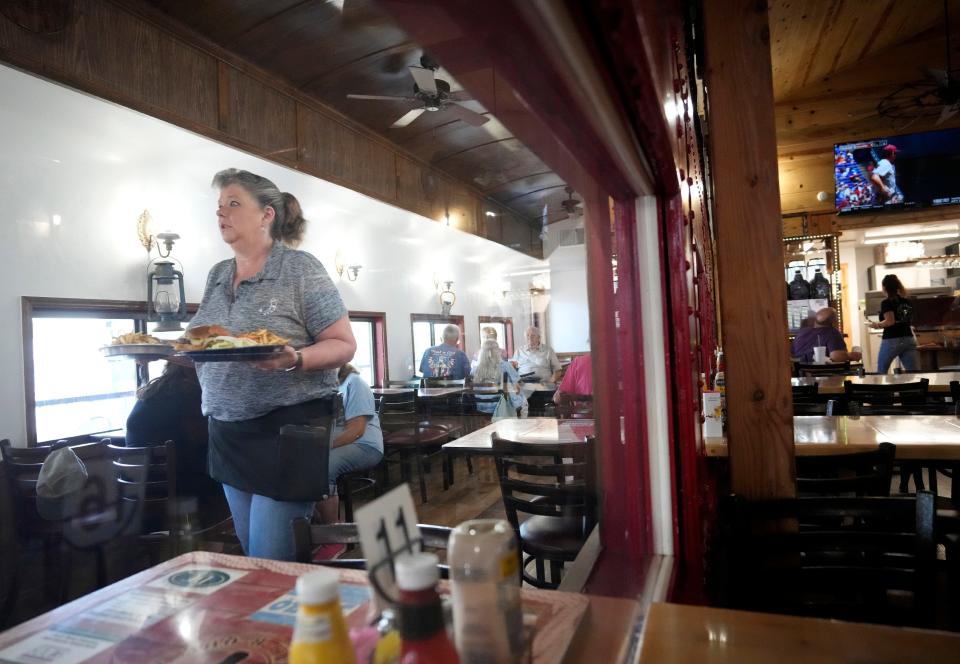
“I think it’s a great idea,” she said. “A lot of these guys are from Fort Grant, which is a minimum security prison anyway, and these guys look forward to getting out and doing something different.”
She, like many other residents and city workers, believes that the prisoners are treated fairly, and she views it as a win-win for the community.
But the Department of Corrections keeps residents and city officials in the dark about what actually happens to prisoners once they leave Willcox, or even the treatment of prisoners on the job.
Kathy Klump, president of the Sulphur Springs Valley Historical Society, said there is a known rule to keep away from the prisoners and don’t engage with them. “I know we're not supposed to talk to them,” she said.
She did say, though, that she also thinks the prisoners enjoy their time working.
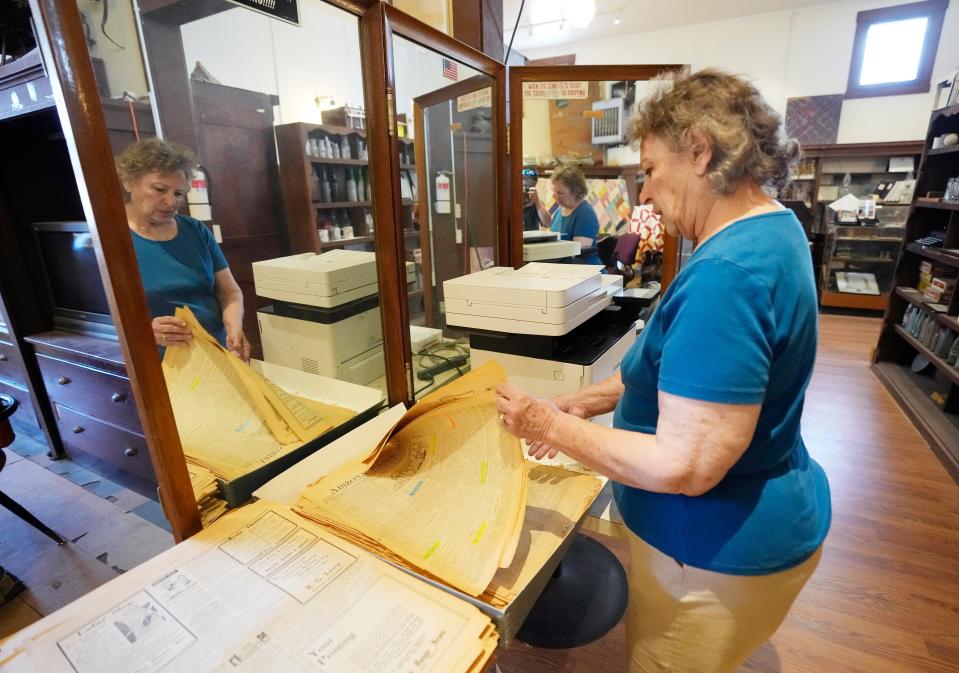
But had residents been able to speak to prisoners working inside Willcox, they would have learned that only a few of the prisoners actually enjoy the work. Many who are serving for DUI, or low-level drug offenses, say that the work is degrading and dehumanizing.
One prisoner described getting thrown up on walls, forced to bend over in the middle of the town square to let police dogs sniff their buttocks, and strip searches every day when they return.
“We hardly get enough food to keep our energy throughout the day,” one prisoner said.
Beyond being sniffed, stripped, searched, and forced to keep quiet unless spoken to, many prisoners simply want an increase in pay.
“As little as $1 an hour would be sufficient to get by comfortably on,” said an incarcerated person at Fort Grant, which supplies most of the prisoners to towns and cities in the southeastern part of the state.
“Working for the pitiful pay wages is an absolute outrage,” said another current prisoner who works at a wastewater treatment plant in Willcox. “It’s not worth the hassle of hard labor. I only work because I need every penny, and if I don't, I'll get a ticket.”
Another current prisoner who recently stopped working for Willcox said he would never do the job again. “It is slave labor and very degrading with how we are treated and how we are looked at,” he said. “Happy to not work there anymore.”
This article originally appeared on Arizona Republic: Prisoners help this Arizona city live beyond its means

